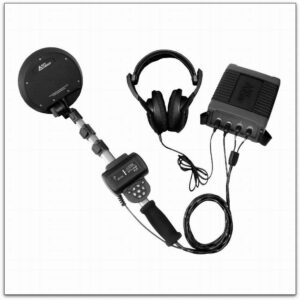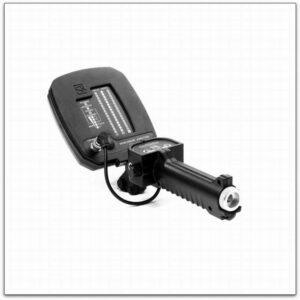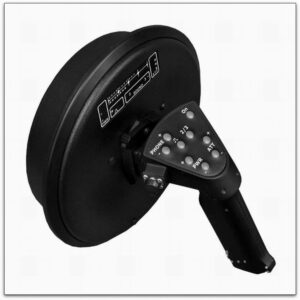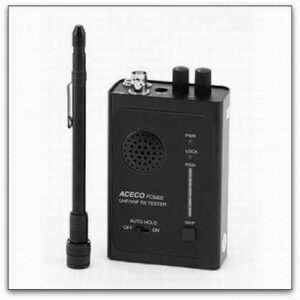Description
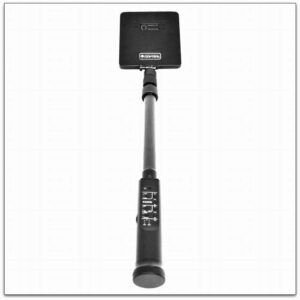

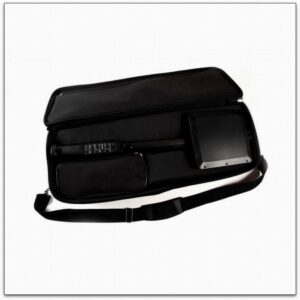
Presence of a reradiated SHF signal envelope detector allows to listen to active electronic devices containing an acoustic transducer. Possibility to work both with a rechargeable battery or 220V AC power supply. The work of a nonlinear junction detector is based on the ability of semiconductor elements to react to a ranging high frequency signal reradiating the 2nd and 3rd harmonics of this signal. Katran-Lux ensures detection of devices containing semiconductor elements and preliminary assessment of the detected object based on the levels of reradiated 2nd and 3rd harmonics. The maximal response from artificial semiconductor elements (transistors, diodes, microchips) is noticed on the 2nd harmonic of the probing signal. The detector Katran-Lux allows to analyze responses of the irradiated objects on both 2nd and 3rd harmonics of the ranging signal which ensures reliable identification of electronic devices and natural oxide semiconductors. The levels of 2nd and 3rd harmonics signals are indicated simultaneously on the locator’s LED display.
Package contents:
– Receiving and transmitting antenna block with a rod and a changeable Li-Ion accumulator battery.
– A battery charger.
– An AC adapter for the charger.
– An operation instruction, a passport.
– Transportation package.
Characteristics:
Types of probing signal: continuous/pulse
Probing signal frequency: 800MHz
Frequency modulation: (CW + FM)
Analyzed harmonics: 2nd and 3rd
Output transmission power: 15W pulse, 1W continuous, 1W in CW + FM mode
Dynamic output adjustment range: 20dB, 11 levels
Sensitivity of radio receivers: not worse that -110dBm
Time of continuous work with one battery at the max. output power:
– in pulse carrier frequency mode: at least 5 hours
– in continuous carrier frequency transmission mode (CW): at least 2 hours
Weight of fully equipped device: not more than 1.7kg
Total length of the device in working condition: 125cm
Total length of the device in folded condition: 55cm
Non Linear Junction Detectors:
In 1970s Americans detected wires in the concrete columns of the American Embassy in Moscow. The bugs were installed during the construction of the building, and there was no other way to extract them except for complete destruction of the building. One shouldn’t neglect the importance of correct frequency tuning of NLJD equipment for different types of search environment (for instance, concrete walls). Bugs or wires (as covert listening devices are commonly called) can be set up deep in concrete columns and they still will be transmitting signals. Non-linear junction detectors (NLJD) are devices designed for search and detection of different types of covert listening devices, various electronic appliances and transmitters comprising of semiconductors. The principle of NLJD equipment operation is based on emission of high radio frequency energy in an area. Detectors have a sensitive receiver designated for reception of objects’ echo signals which, for operator’s convenience, are marked down with sound or displayed on graphical user’s interface. Depending on the model, non-linear junction detectors are capable of detecting almost any electronic appliance in any operational mode: active, stand-by, switch-off. The designation of such devices consists in detection of radio microphones, microphone amplifiers, dictophones in premises (walls, floors, ceilings, furniture, etc.). Non-linear junction detectors acquired a reputation as perfect means of counter-espionage, as embassies and other diplomatic posts are known to be most popular targets for eavesdropping equipment. Specific models of NLJD are used by the police in search for weapons during events involving great masses of people. Detectors are used for providing location secure from covert listening devices in different organizations. Non-linear junction detectors can serve multiple purposes and have a wide range of implementation, starting from ground detectors up to equipment used for detection of mobile phones. Wide range of NLJD is presupposed by the type of material or surface for search operations – ground detectors are preferable for object detection in soil, portable detectors tuned to appropriate frequency are better in search within wooden furniture. Non-linear junction detectors have a very peculiar designation, therefore their usage is conditioned by goals set by customers. Taking into account great variety of NLJD equipment there is a specific model for any purpose you may require. Current NLJD products line include models for various applications.
Why Non Linear Junction Detectors?
NLJD technology has proven to be most effective in detection of semiconductors containing multiple layers of silicon, a P-Type and an N-Type. The point where they meet is called a Non Linear Junction.Non Linear Junction also appears in nature: dissimilar metals in contact with one another; the rust on metals resulting from corrosion.


